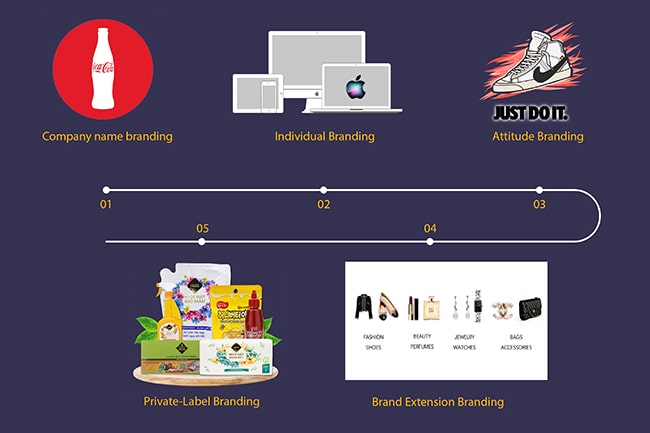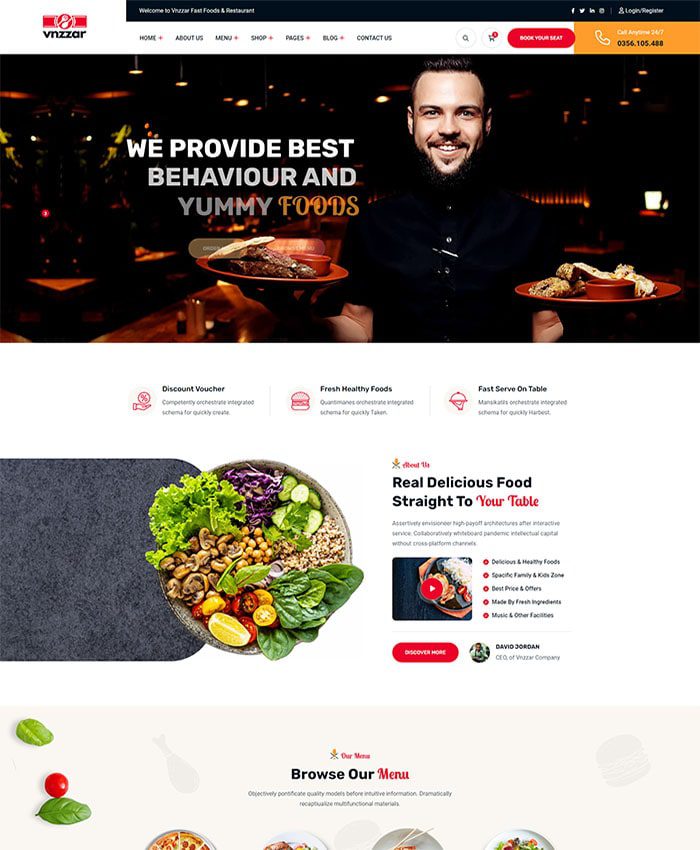A well-received product also helps a business achieve success. In a competitive market, when the role of consumers is increasingly enhanced, businesses need effective brand building strategies to ensure that products and services meet current requirements. So what is a brand building strategy? How to implement a plan that is consistent with the values of the business and resonates with customers.
1. What is a branding strategy?
A branding strategy is a long-term plan for developing a successful brand to achieve specific goals. A well-planned and implemented branding strategy will impact all aspects of your business.
- Helps your business connect with consumer needs and emotions
- Adapts to a competitive environment
- Is how your business meets its marketing goals
- Maintains relationships with customers.
- Define and present yourself to potential customers.
When developing a strategy, following a clear process is the key to success for businesses.
2. Types of branding strategies
Types of branding strategies have the potential to add value to a business. The choice of strategy depends on the target audience, industry, budget and marketing campaign of the business.

2.1 Company name branding
Famous brands have taken advantage of The popularity of a company name to enhance brand recognition. Logos, slogans, packaging or colors are often recognized by consumers when they think of a business in general. For example, companies such as Coca-Cola and Porsche have relied on corporate name branding strategies to attract their customers.
2.2 Individual Branding
Large companies with many popular product lines may choose an individual branding strategy by naming each product. For example, Apple is a parent company and relies on a distinct branding strategy to market its other brands such as the Mac, iPhone, and iPad.
2.3 Attitude Branding
Sometimes companies sell more than just products, they sell their business story. This branding strategy will help businesses come alive by connecting the brand with customers emotionally through marketing messages that incorporate human elements. Nike has used the Attitude Branding strategy not only to sell sneakers but also to promote a healthy lifestyle in line with the extremely cool slogan “Just do it”.
2.4 Brand Extension Branding
A growing brand can expand its reach through a brand extension strategy. This is the fastest way for a business to gain market share and increase brand value. World-famous fashion brands all use brand extension strategies to launch new lines of shoes, handbags, perfumes, cosmetics and accessories, all while maintaining the brand identity.
2.5 Private-Label Branding
Successful store brands can use a private label strategy to compete with larger retailers. For example, large supermarket chains such as Kroger, which manufacture and sell products under the Kroger brand name, have provided consumers with more cost-effective food options.
3. 3 stages of developing a brand building strategy

Stage 1: Before starting
Brand building strategy must be consistent with overall business goals, target audience or potential customers. Make sure the business has enough potential to develop a branding strategy that is appropriate for target groups and achieves overall business goals.
Stage 2: 5 elements to develop a branding strategy
Each business will have its own direction for developing a branding strategy. However, all must have the following 5 core elements:
- Finding Brand Purpose
As Simon Sinek said in his famous TED Talks speech: “People don’t buy whatyou do, they buy whyyou do it.”. Brand meaning is the first key element that businesses need to determine to orient their brand building. It is the reason for the brand’s existence, the big picture of what you want your customers to receive or the impact your business has on the market. Whether you call it a “purpose”, a “mission statement” or a “reason”, it must clearly show the reason for the business’s existence.
A good, clear brand meaning that demonstrates understanding and “heart” in the profession will win the public’s sympathy. Make sure that the business can do what it promises.
- Define the core values of the brand (Brand Value)
The core values of the brand lie in: What do you want to represent? Just like Brand Purpose, communicating clear values will attract customers to share those values widely for the business.
Defining clear brand values will help you make the right business and strategic decisions such as whether the website should be simple and easy to understand or detailed and comprehensive. Products should focus on quality or price. These values must be meaningful and achievable.
- Building a Brand Personality
Brand personality helps businesses orient their communication style, the type of content they share, and the tone of voice they use with their customers. Try to describe them in as much detail as possible. The clearer the image, the more useful it is.
Just like people who are “humorous”, “cool”, “liberal”, “attractive”, “different”,… this is also the personality associated with the brand, the personality that customers feel from your brand.
Whether the relationship between a brand and its customers is strong or not depends entirely on whether the customer’s feelings towards the brand are good or not?
- Brand Positioning
Brand positioning is the position of the business in the mind of the customer, what it means to the customer, how it is different from competitors in the market. Positioning creates a connection between the brand and the customer. They will always remember the brand every time they are reminded of the product or its outstanding features.
To position the brand accurately, businesses must answer 3 questions: What do customers want? Can you commit to providing customers with a better or different product than your competitors? Why should customers trust your promises?
- Brand Identity Design
The final element in a branding strategy is brand identity design. These are tangible design assets that customers can directly see and experience, such as brand name, logo, tagline, color palette, typography, shapes, etc.
The goal of this element is for customers to be able to recognize your brand at all times, even when they don’t see the brand name. Therefore, businesses must have the right and consistent strategy to highlight brand meaning, values, brand personality and benefits on brand materials/touchpoints.
Stage 3: Finalize and test
If you are missing one of the above elements, take the time to complete them. Taking your branding strategy seriously from the start will save you time, money, and will help you be consistent and effective.
At this stage, once you have developed your branding strategy, continue to check that all your touch points, such as your website and social media, are aligned, and that they reflect your values and purpose in everything you do.
4. What is a successful branding strategy?

A strong and successful branding strategy must ensure that it has the following 5 characteristics:
4.1 Consistency
No branding strategy can be sustained without consistency across marketing channels and campaigns. There needs to be a clear connection from one platform/advertisement to another. Ensure that customers do not receive conflicting opinions about the brand or confused messages.
4.2 Adaptability
While brands need to maintain consistency across marketing campaigns, that does not mean ignoring adjustments and adaptability. An occasional adjustment should be included in a branding strategy.
4.3 Focus on the customer
The customer perspective is at the heart of all branding efforts. It involves finding the market and delighting customers through creative efforts. Targeting and attracting the right audience will help you retain them. Make your customers feel that they are important to you.
4.4 Stick to statistics and data
If you don’t focus on statistics and data, you will miss out on opportunities and insights. You need to interpret the numbers and see how they relate to your strategic goals. Understanding the data will help businesses analyze competitors and seize opportunities to surpass them.
4.5 Communication
A very important characteristic that determines the success of a branding strategy is the ability to communicate information throughout the entire brand. All parts of the brand must have the same way of communicating to maintain customer loyalty. Make sure your strategy encourages employees to communicate with each other and with customers in line with the brand idea.
If you are in need of branding, come to Adsmo. Our team of talented experts will help you elevate your brand with the most powerful and suitable branding strategies.
See more:
Contact ADSMO now – INFORMATION TECHNOLOGY & MARKETING solution, providing customized Enterprise Software solutions, consulting on building digital platforms with the mission:
TOTAL solution, BREAKTHROUGH development – Optimizing COSTS – Increasing PROFITS. We are committed to providing you with:
- Management solutions tailored to your business needs.
- Easy-to-use and efficient systems.
- Professional customer support services.
Contact ADSMO now for a free consultation:
- Address:8th Floor, HD Tower Building – 22 Pho Moi – Thuy Nguyen Ward – City. Hai Phong
- Website: https://adsmo.vn
- Email: info@adsmo.vn
- Hotline: 0356 105 388














